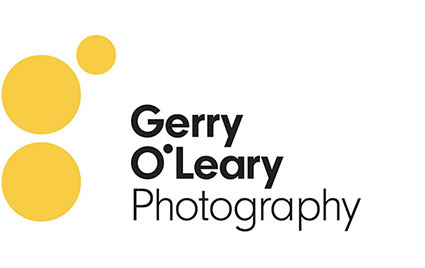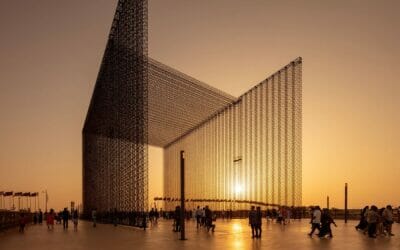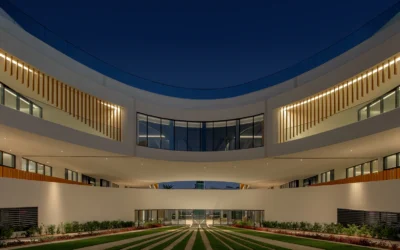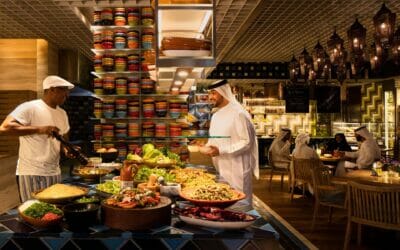Andaz Capital Gate by Hyatt, Abu Dhabi, an architectural image captured by Gerry O’Leary at dawn, to convey tranquillity and serenity. A dynamic, engaging composition that features on a book cover.
Architecture Photography
Photographing architecture is not simply ‘point and shoot’. For as long as I’ve been taking photos of buildings, I’ve had people ask questions about how or why I’m in a certain position at a particular time, or how to get the best image of a building. It’s a complex topic, but I thought I’d expand on it in blog form for those with an interest in architecture.
Photographing architecture is a specialised genre of photography, which takes a keen eye and plenty of patience. It focuses on capturing images of the built environment, both the interior and exterior of buildings. As a photographer of some of the world’s most remarkable buildings, I need to consider the structure, its angles, architectural details and the overall design of the building, as well as, and perhaps most importantly, the best light to capture it. I aim to create images that are as aesthetically appealing as possible. By highlighting the form, I want architects to see their dream realised and viewers to admire that vision.
Architectural Image Composition
I often compare myself to a poet, musician or chef and that’s because I have to compose an image, not just snap the picture. The composition of each image is hugely important. This refers to how each element in the photograph is arranged or organised – the positioning and placement of each element requires forethought, and the relationship between the elements creates an initial impact on the viewer that either engages them or makes them lose interest.
I understand that the composition of the image significantly influences my viewer’s perception and engagement. I know they have an emotional response to the image, and I seek to create impact. By creating a harmonious balance between the main subject, background, foreground, lines, shapes and colours, I can hold my viewer’s attention. I put careful thought into arranging each element to compose a visually pleasing image that draws my audience in. This is creating a narrative and helps convey a story through the images.
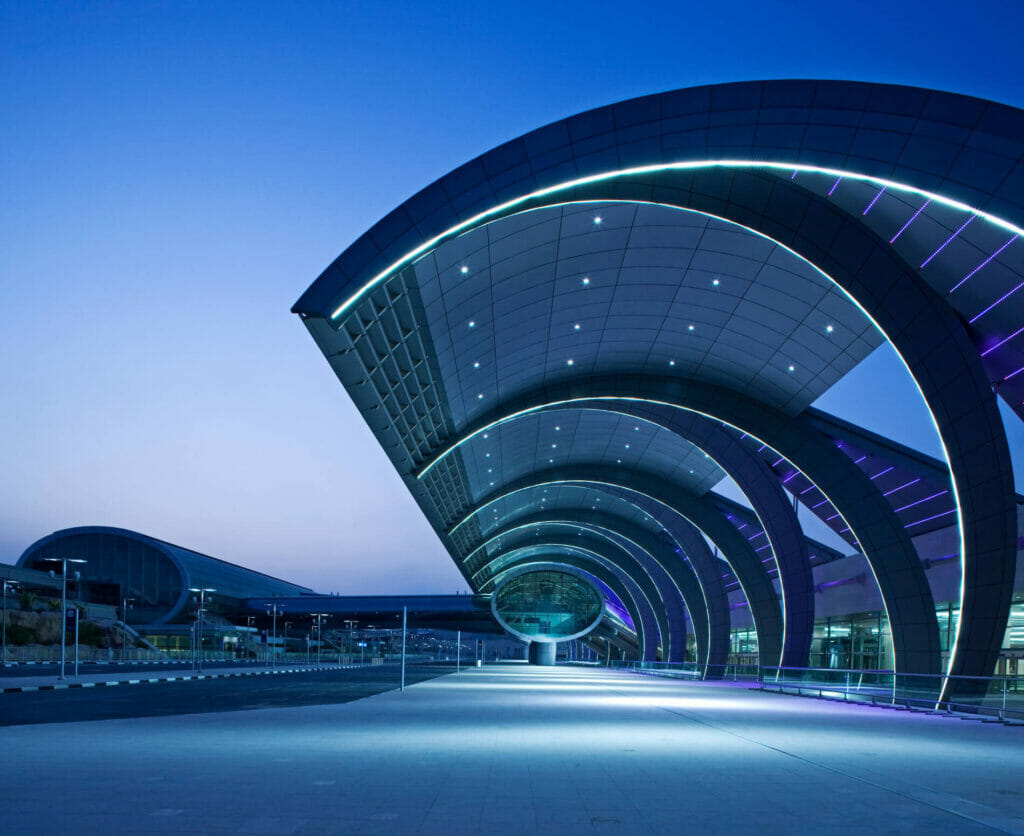
Perspective in Building Photography
Understanding perspective and correcting it using perspective-controlled (PC) controlled lenses is vitally important when capturing architectural photos. I regularly use a compositional technique called a one-point perspective to create a sense of depth, and to draw my viewer’s attention towards a singular vanishing point. This relies on the natural convergence of parallel lines towards a single point on the horizon, which provides depth and distance, and delivers a strong visual impact.
How do I achieve this one-point perspective? I position the camera in a way that the primary lines of the architecture, such as walls or corridors, appear to converge towards a single point on the horizon. This emphasises the scale, depth and symmetry of the subject and adds a dynamic quality to my building photos. For certain projects, it can evoke a sense of grandeur or provide a striking image that lives on in the viewer’s memory.
Lighting for Architectural Photography
I speak about light a lot, because there is no overstating its importance when it comes to capturing great images of buildings. Light serves as a primary tool for photographers – we use it to shape and enhance our compositions. The correct light brings architecture to life – it reveals its form, texture and beautiful details. I can showcase the surface, materials and craftmanship better when I have the right lighting, whether that’s natural or artificially created.
Light has a profound impact on the mood of architectural images. The intensity, direction and colour temperature of light generates different ambiances and emotions. For instance, if I’d like to convey tranquillity or elegance, I use soft, diffused lighting. For more dramatic moods, I use the interplay of light and shadow to accentuate. Shadow is important too, and I’ll cover more in a future article about lighting.
The architectural photography process is quite deliberate and precise, especially because the timing is contingent on the building’s orientation to the sun. That’s why I plan meticulously and ensure my shoot timing coincides with the best available light. I’ve lived in Dubai so long that I have great instincts for when the light is best, however I still ensure that I give myself time to get the right angles and can capture it as the architect intended. I continuously leverage different lighting conditions to elicit specific responses from viewers.
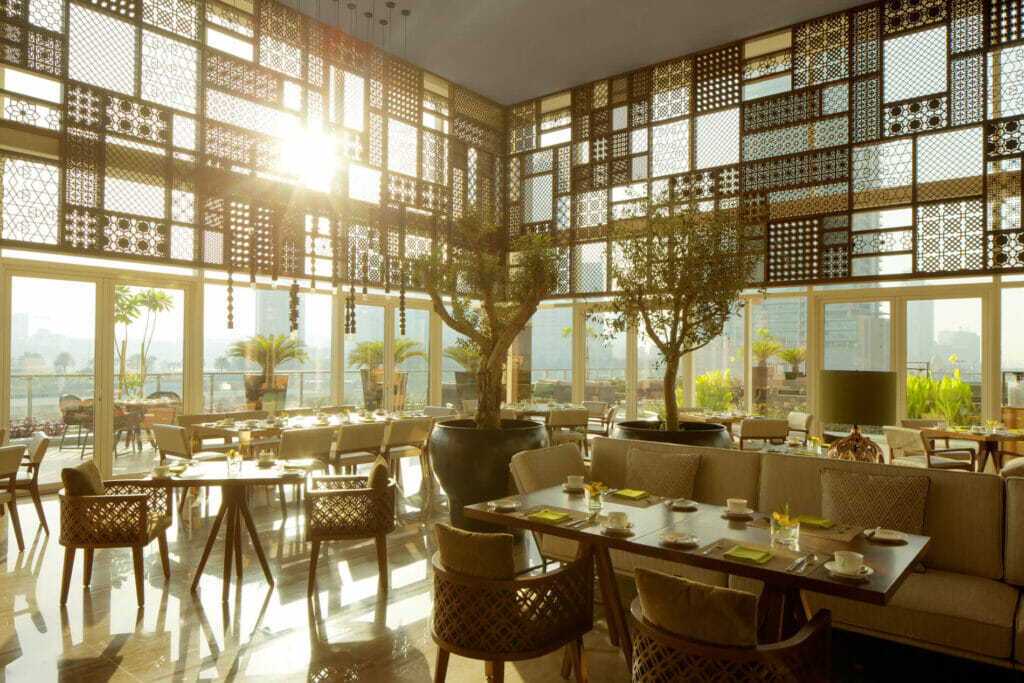
In effect, I’m sculpting with light, and this gives me the power to transform a 3D space into a 2D image, while still providing 3D perspective. Although I have received a MQEP (Master Qualified European Photographer) for skills such as these, I still consider myself an eternal student of light.
Who Needs Architectural Photography?
Architects and designers require high-quality images of their complete projects for promotional materials and submissions to competitions and publications. Photographers play a crucial role in showcasing the craftmanship of architecture. These make up a significant part of my client list, as they understand the power of the image.
As the great Architectural Photographer Julius Shulman said, “Architects live and die by the images that are taken of their work, as these images alone are what most people see. For every person who visits a private house, there are maybe 10,000 who only view it as a photo.”
Real estate developers and agents also rely on photos of buildings to market and sell their properties. Many people reading this have been swayed by a glossy brochure with high quality images that highlight the architectural features and design elements of a development. Well-crafted images enhance the perceived property value, making them a fantastic return on investment for real estate companies.
Brand Photography for Hotels and Resorts
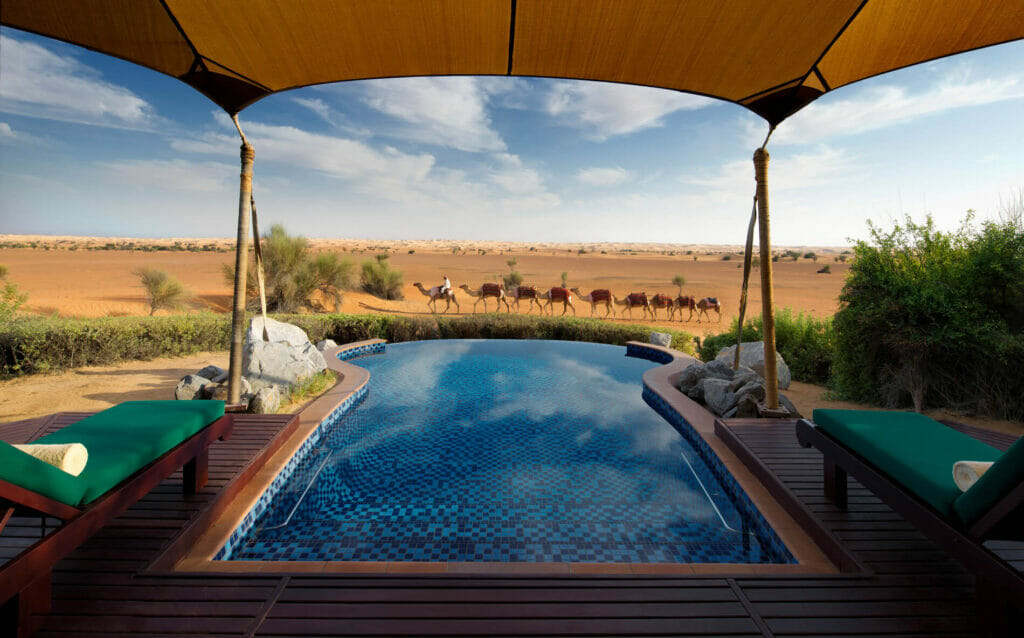
The hospitality industry, which encompasses a broad range of businesses from hotels to tourism boards, rely heavily on visuals to attract potential guests. My job is to capture the beauty of a resort or destination and what makes it unique.
Travellers are drawn to captivating images of a destination – they promise excitement, adventure and the opportunity to make lasting memories somewhere remarkable. My images weave a story where travellers can envision themselves, giving them a glimpse into their future holiday.
Many hotels and resorts are beautifully designed with visually stunning spaces to distinguish from their competitors. They hire me to photograph the distinctive features, innovative design and luxurious elements of their property. This can vary from hotel beaches and pool areas to luxury suites in hotels and also capturing bars and restaurants. When I craft these images, I highlight the aesthetic appeal and ambiance of the place to entice guests to book their stay. These images are then extensively used for promotional purposes across many platforms. I have worked with a range of luxury hotel and resort clients, including Burj Al Arab in Dubai and various Radisson Hotel Groups across the GCC countries.
The Outcomes of Great Design Photography
Architectural photography helps to establish and reinforce the visual identity of a property, which can also align with the brand identity of an establishment or group. The skill and techniques that an experienced photographer of architecture offers can, at the very least, capture a building in its best light, but can also elevate its status, making it stand out from the crowd. The images can vary from stunning architectural exteriors and interiors, to architectural detail to capture the fine detail of an amazing architectural structure.
If you have a passion for architectural projects, check out this video of Tadawul in Riyadh, a recent project of mine.
Next week, I’ll be discussing some of my favourite buildings.
